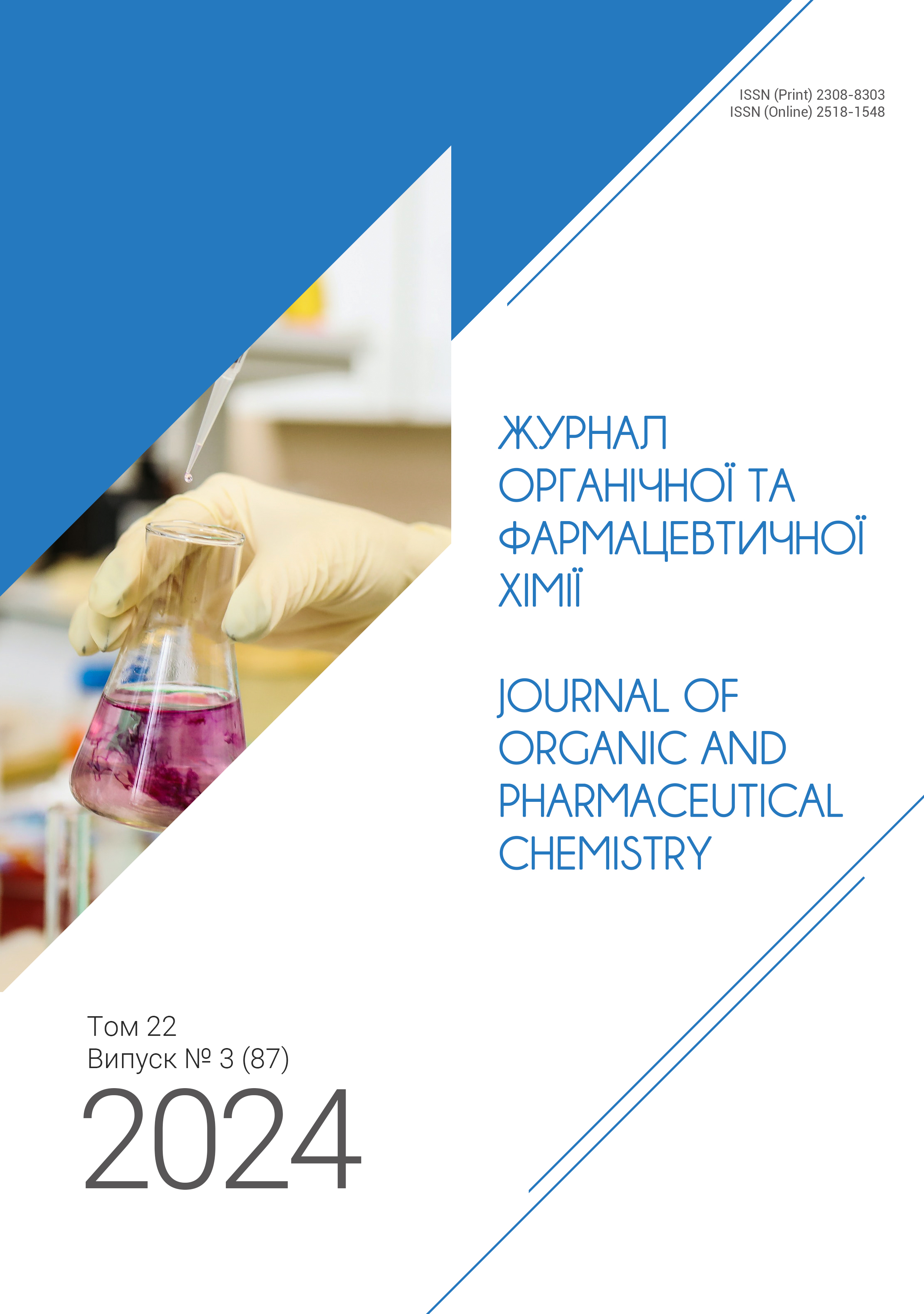Vol. 22 No. 3 (2024)
Full Issue
Original Researches
-
Synthesis and Physicochemical Characteristics of 6,6-Difluorobicyclo[3.2.0]heptane Derivatives
The gram-scale synthesis of 6,6-difluorobicyclo[3.2.0]heptane-derived building blocks (i.e., primary amine and carboxylic acid) was performed via the deoxofluorination of the corresponding bicyclic keto ester with diethylaminosulfur trifluride (DAST). Physicochemical properties of the compounds obtained (i.e., pKa) or their model benzamide / anilide derivatives (i.e., LogP) were determined experimentally and compared to those of monocyclic and non-fluorinated bicyclic counterparts. It was found that gem-difluorination expectedly decreased the pKa values by 0.3 - 0.5 units, whereas the LogP values were decreased by 0.54 - 0.55 units. Meanwhile, the bicyclic system itself had a negligible impact on the compounds’ acidity and lipophilicity compared to the monocyclic counterparts.
Review Articles
-
Chemical Warfare Agents: Structure, Properties, Decontamination (Part 2)
The review is aimed at summarizing and systematizing information about various methods of deactivation of chemical warfare agents that are necessary on the battlefield, as well as in laboratories, research institutions, and facilities of production, storage, and destruction of poisonous substances. The review presents the main directions of neutralizing warfare poisonous substances, which are the most effective in the conditions of their real use. In the second part of this work, the methods of deactivating warfare poisons using nucleophilic reagents, primarily α-nucleophiles, which have high efficiency and can react as nucleophiles and as oxidants, are considered in detail. A promising area of degradation of such products is the use of supernucleophilic systems based on functionalized detergents, as well as adsorption and photocatalytic deactivation methods. The material presented above shows the importance of general knowledge about the physical and chemical properties of chemical warfare agents, the rate of their decomposition, the advantages and disadvantages of certain available technologies for their application. This review can be useful for finding new and improving known methods for decontamination of chemical warfare agents and other ecotoxicants, and protecting the environment.
Advanced Researches
-
Multigram Synthesis of 2-Azabicyclo[2.1.1]hexane-1-Carboxylates (2,4-Methanoprolines) – Promising Bicyclic Proline Analogs
An optimized approach towards 4-substituted 2,4-methanoproline derivatives is reported. Careful selection of the starting materials and optimized isolation procedure provided easy access to a key bicyclic building block in a preparative yield of 32% over five laboratory steps of up to 0.7 kg. Further modifications allowed us to obtain a number of useful derivatives, including those containing NH2, COOH, CH2NH2, and CH2F fragments with orthogonally protected functionalities.
-
Reevaluating ortho-Carborane Synthesis: Success with Mono-Substituted Acetylenes in the Presence of Silver Salts
The study shows that traditional methods for synthesizing ortho-carboranes from nido-B10H14 and its complexes (B10H12L2) using donor- and acceptor-disubstituted acetylenes yielding low efficiencies (yields 0 - 12%). Attempts to improve yields with ionic liquids and silver salts as catalysts were unsuccessful with disubstituted acetylenes. However, it has been found that the use of mono-substituted acetylenes (phenylacetylene, ethyl propiolate) in the presence of silver salts in the reaction with B10H12L2 substrates produces ortho-carboranes in high yields (~90%). This suggests that the key step is the formation and subsequent addition of silver acetylenides, and not the donor-acceptor π-complexes previously assumed. This finding allows us to better understand the mechanisms of the ortho-carboranes formation and offers an efficient pathway for their synthesis.
-
High-Temperature Polymer Components Reimagined: Scalable Syntheses and de novo Routes to Structurally Versatile Precursors
Developing efficient and scalable synthetic protocols for key polymer precursors is crucial to advancing high-performance materials designed to withstand severe thermal environments. In this article, we report on the development of solid, high-yield methods for preparing structurally diverse building blocks, including s-triazine derivatives, phenyl-borosilane alkynyl oligomers, phthalonitrile-based monomers, and novel diamine curing agents on multi-gram to multi-hundred-gram scales. These carefully optimized procedures use readily available starting materials, mild conditions, and well-known synthetic transformations, thus addressing the longstanding challenges associated with their practical upscaling. The resulting library of monomers and oligomers offers a broad range of reactive functional groups (e.g., nitriles, alkynes, borosilane motifs), enabling future combinatorial-like strategies for the formation of advanced co-polymers with enhanced thermal stability, mechanical strength, and tunable properties suitable for high-temperature applications.










